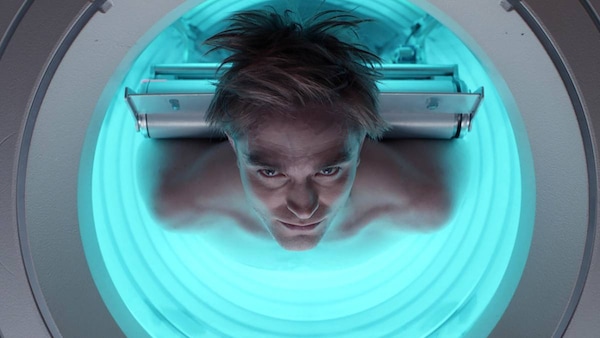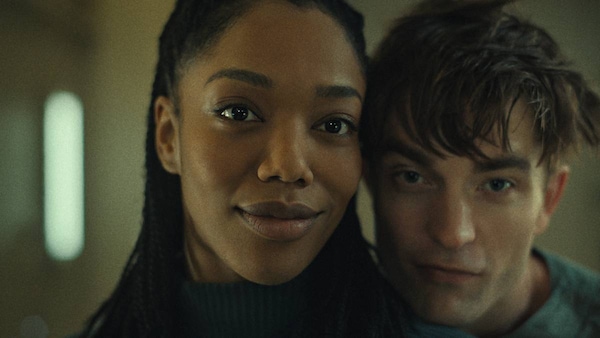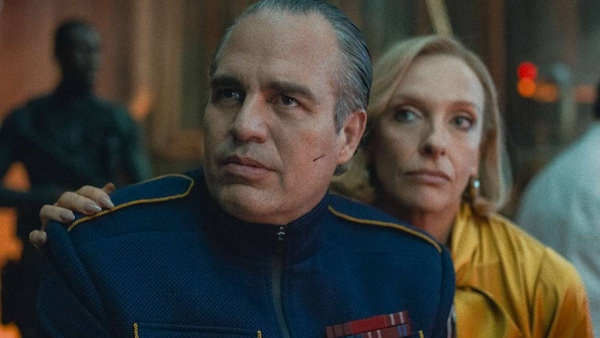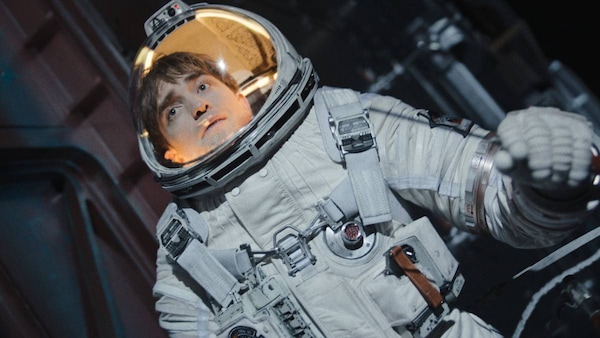Mickey 17: Will The Real Bong Joon-ho Please Stand Up?
This is #CineFile, where our critic Rahul Desai goes beyond the obvious takes, to dissect movies and shows that are in the news.

Last Updated: 05.48 PM, Mar 07, 2025
DIRECTOR BONG (Joon-ho) smokes two pipes of social critique. The first is real-world satire that smells like science-fiction fantasy: Parasite is an example. The specific and universal class rage at the core of Parasite is so unnerving that it feels imaginary. A lot of its critical acclaim stemmed from the near-implausible oppression in it. The second is science-fiction fantasy that exudes real-world satire. Okja, Snowpiercer and The Host belong to this populated category — combining apocalyptic vision, on-the-nose allegories, anti-capitalist angst and The-Hudsucker-Proxy-coded staging to deliver tragicomic blends of cinema and commentary. Mickey 17 is the newest entry in this life-is-stranger-than-fiction category, and it’s the greediest of them all. Joon-ho crafts it like a scathing mixtape of all he’s ever done and thought. The result is so much that it’s almost not enough. It’s so dense that it sacrifices something in pursuit of everything.

Based on the book Mickey7 by Edward Ashton, Mickey 17 starts with an all-timer premise: the man who’s tired of dying. Escaping danger (and loan sharks) on Earth, Mickey Barnes signs up to be an “Expendable” on a spaceship that’s on a four-year journey to colonise a distant planet named Nilfheim. Which means he’s a human guinea pig for any dangerous experiment, vaccine and mission: hired to die multiple times only to get ‘reprinted’ by a cloning machine that was banned on Earth.
The problem begins when the 17th version of Mickey — who’s been killed in all sorts of gruesome and unfortunate ways so far — unexpectedly survives a Nilfheim mission. He returns to his room only to discover that Mickey 18 — a badass, give-no-shits iteration of him — is already printed and living. It’s a tantalising hook; ‘multiples’ like them are forbidden, which means they must unite to ensure that both aren’t wiped out. The plot is further livened by the presence of a girlfriend (Naomi Ackie), a treacherous old friend, spaceship boss and fascist politician played by Nice Guy Mark Ruffalo doing his worst (best) Donald Trump impression, and his ‘Pure White’ aspirations for the planet.

Up until this point, Mickey 17 is a funny and whimsical film full of life (the irony) and possibilities. Robert Pattinson is great as meek Mickey 17 and great as macho Mickey 18, making you feel for the literalisation of his identity crisis. We’ve all felt one version of ourselves overlapping another; it’s never easy. The obvious metaphors of the expendability of workers (the job stays the same) in a consumerist society aside, there’s something deeply poignant about Mickey’s shapeless relationship with death. It’s no coincidence that he grows a sensitisation to pain and longing at 18, a number that corresponds to the age of young adulthood, a time most humans start (legally) looking at life as its own entity rather than as the antithesis of death. Mickey 18 is a rash and passionate and courageous and anti-establishment hero, an allusion to how people evolve in sync with their awakening to the contradictions around them. The viewer has to keep reminding themselves that each subsequent Mickey isn’t older or wiser — he’s just a newer iteration with a week or month worth of additional memories and suppressed feelings. There’s no past Mickey or future Mickey; there’s just Mickey getting the mickey taken out of his existence.

Going to work like a clone every day and dying a thousand deaths — that’s the tagline of everyman capitalism, perpetuated by CEO-cum-scumbag-politicians like Kenneth Marshall (Ruffalo) who use religion and catholicism as a front for race-washing and “dumb-f*ck” fascism. Joon-ho employs visual aesthetics alone to paint a morbidly beautiful picture of dehumanisation and cult energy — the way Mickey’s limp body emerges from the printer; the angle it’s chucked into the flames at; the shot of a severed hand floating in outer space as if it’s run out of signs; the physical conversation between two lovers. It unfolds like an artistic update of Passengers (2016), another unlikely sci-fi romance about ‘selected’ humans being transported on a spaceship to a potential colony.

Perhaps if this film had stayed in the spaceship and explored the hyper-intimate crisis of its protagonist(s), Mickey 17 might have gotten its point across without embarking on a wider social-grab. But the thing about Joon-ho and his English-language epics is that his intelligent and restless mind seems to be over-translating the intent of his voice. You can sense that he’s like a genius batsman for whom the ‘game’ itself is so easy that it’s about which shot he wants to play, not whether he’ll hit the ball or score runs. And he invariably has multiple options, which makes it feel like the medium is trying to keep up with him, not the other way around. The South Korean auteur cuts across genres, scales, ideas, philosophies, tones and emotions like a kid in a Don’t Look Up and Arrival-coded candy shop. For him, more is less (without subtitles), so in come the inevitable themes of colonisation, giant-slug-like natives (creatures called The Creepers), the naughty tut-tut messaging, and the reset-button-isation of humanity itself.

A lot happens in the final act — if one can call it that — of Mickey 17. But very little of it is given the time to breathe. The climax is supposed to be moving and wry, but the film-maker treats every moment like its own bloated film. Even the tyranny of the Trumpian chief starts to get repetitive, especially when his narcissism is hard-launched by the prospect of cameras and historical revisionism. The visual effects are almost too impressive, in a way that suggests Joon-ho might have resorted to blank-cheque storytelling after the cultural moment that Parasite became. He creates things here because he can, and not always because they’re supplemental to his world-building expertise; the observer in him cannot resist the artist in him. In an age where everyday reality can often pass off as dystopian absurdity, Mickey 17 then suffers the same way most comedians and satirists do: the joke is hardly implausible. Limitless horror is all too common, and weird new planets with misunderstood monsters don’t do justice to the demons in our head anymore. Not even Bong can smoke that pipe dream.

 Premium
Premium